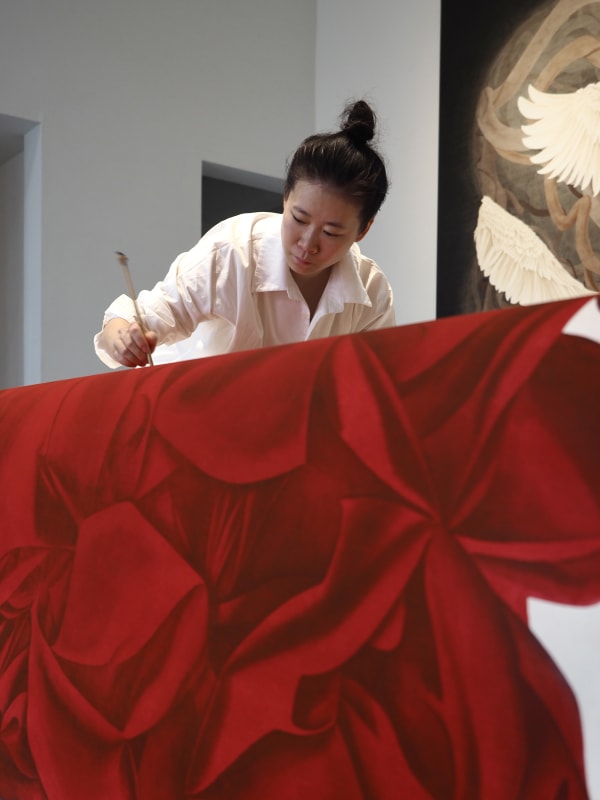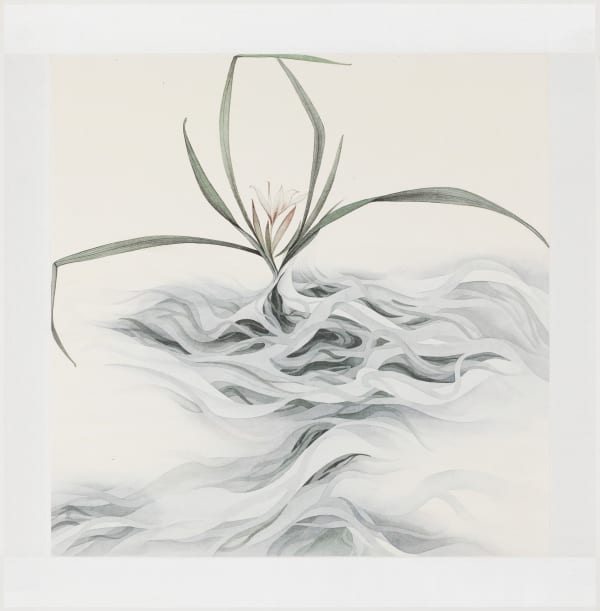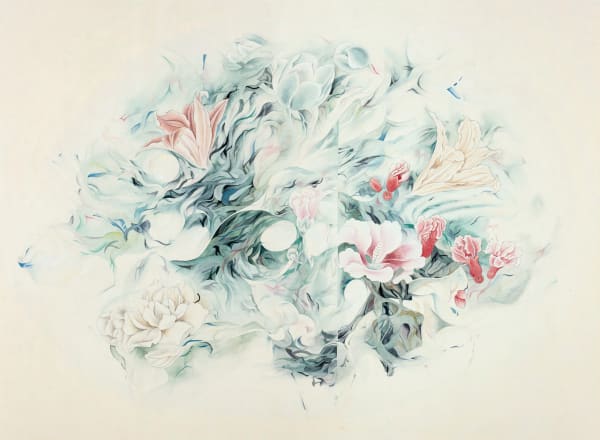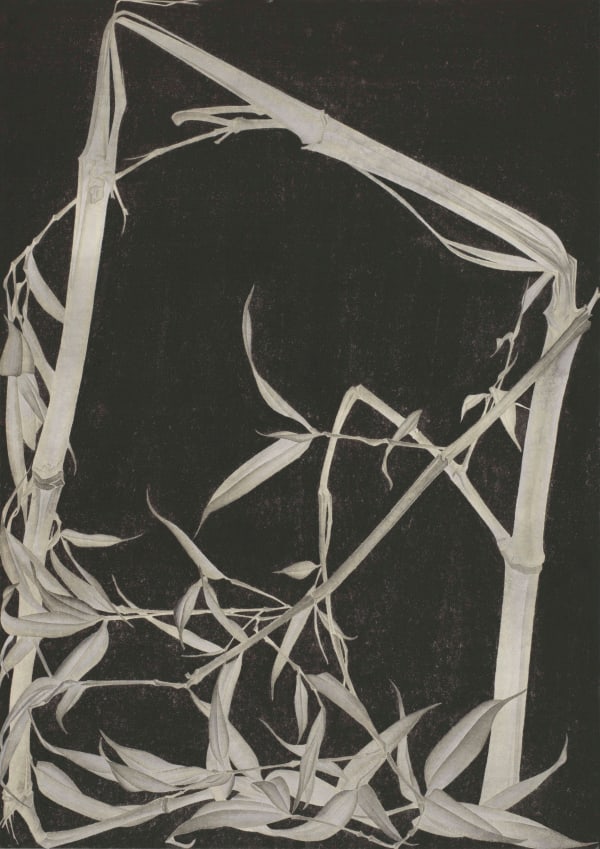KANG Chunhui (b. 1982, Urumchi, Xinjiang) graduated with her MFA from Seoul National University in 2010 focusing on video art. In 2006, she went to the Kizil Grottos (4th to 8th Centuries) near her hometown of Urumchi to study the early Buddhist mural paintings. The painting materials, technique, style and subject matter of the Kizil Grottos is highly syncretic reflecting Central Asian—Kuchan, Gandharan and Persian—origins and reflecting contemporaneous artistic exchange with Byzantine Europe and historical influence from both India and classical Greece. Kang Chunhui’s current artistic practice reinterprets this Central Asia religious painting language within the historical, cultural and sociological context of Xinjiang today.
Xinjiang
In her most recent project, Kang Chunhui combines her interest in painting, site-specific art and documentary video to respond to eight sites in Xinjiang selected by the artist for their natural, cultural, religious, historical, literary and or sociological significance. Lop Nor, for example, is a historically and archaeologically, multi-layered socio-cultural site situated at the far east shore of the post-glacial Tarim lake. From around 1800 BC until the 9th century, the lake supported a thriving Indo-European Tocharian culture. The Buddhist monk Faxian (337-422) went by the Lop Desert on his way to the Indus valley as did Marco Polo (1254-1324) in his travels along the Silk Road. A former salt mash, Lop Nor has run dry as a result of dam construction and, over the past hundred years, has been used variously as a site of large-scale, industrial mining, a contested site of ecological restoration and the military test site where China detonated its first atomic and hydrogen weapons.
The Kyzilya Grand Canyon at Kuqa (or Kucha) is another site chosen by Kang Chunhui. Kucha, for much of its history, was the most populous oasis in the Tarim Basin. As a Central Asian metropolis, it was part of the Silk Road economy, and was in contact with the rest of Central Asia, including Sogdiana and Bactria, and thus also with the cultures of South Asia, Persia, and the coastal areas of China. The main population of Kucha spoke an Indo-European language known as Tocharian. Kyzilya means “red cliff” in Uyghur and the eponymous geological formations consist of massive grooved canyons and ridges carved in red sandstone by wind and sand. In her site-specific practice, Kang Chunhui compounds this red sandstone into the mineral pigments she employs to record her experience of the location. The resulting painting is thus both a personal response to as well as a material index of this physically and historically imposing landscape.
Mineral Pigments
This intersection between the land, mineral pigments and art is central to Kang Chunhui’s revival of Central Asian religious painting. Unlike other artists who purchase their mineral pigments already compounded, Kang researches and compounds her own mineral pigments from the same local sources used by the Central Asian artisans working in and around the Kizil Grottos. Using her compounded pigments, she then renders polysemous subjects simultaneously mundane and religious using the chromatic intensity and range made possible by this process.
In her Sumeru series, Kang explores the relationship between color, shape, light, dimension and boundary through the form of the fold. Folds of draping fabric are a key artistic element in Gandharan Greco-Buddhist sculpture and form the basis for the brush-line mode of early Chinese figure painting that later becomes the sine qua non of East Asian brush painting. In Kang’s treatment of the fabric folds she utilizes not line and outline but the color and shadow characteristic of South Asian, Central Asian and Hellenistic polychrome painting as the primary means of modeling form. The red and white that she uses are, in fact, compounded from minerals sourced from the same sites used by the Kizil Grotto artisans and it is through her fine control of the compounding process that Kang achieves the chromatic gradations she utilizes to model the forms of her folds. It is worth noting that Sumeru refers to the sacred five-peaked mountain of Hindu, Jain, and Buddhist cosmology. The fractal-like architectural structures of the Buddhist pagoda and temple complexes such as Angkor Wat (12th Century) and Boroabudur (9th Century) are realizations of the unfolding metaphysical vision symbolized by Sumeru anticipating by a millennium Giles Deleuze’s writings on the Fold in the metaphysics of Leibnitz and the Baroque.
Kang Chunhui has exhibited at the Asia Art Week, New York (2025), Xinjiang Art Museum, Urumqi (2023, 2024), Wuhan Art Museum, Wuhan (2022), Jiangsu Museum of Modern Art, Nanjing (2021), Peking University, Beijing (2021), Zhejiang Art Museum, Hangzhou (2020), Chengdu Museum, Chengdu (2019), The Royal Society of British Artists, London (2018), Today Art Museum, Beijing (2017), University of Sydney Art Gallery, Sydney (2017), University of Hong Kong Museum and Art Gallery, Hong Kong (2016). Her works have been collected by the Wuhan Art Museum, Wuhan, Akita Museum of Art, Akita, Guardian Art Center, Bejing, Taikang Group, Beijing, and the Center for Contemporary Asian Art, Sydney.
-
 Morning Clouds Album No.5 朝云著 册页之五, 2024
Morning Clouds Album No.5 朝云著 册页之五, 2024 -
 The Hidden Protagonist No.4 隐逸的主角 No.4 , 2024
The Hidden Protagonist No.4 隐逸的主角 No.4 , 2024 -
 The Hidden Protagonist: Mount Fuchun 隐逸的主角:富春山, 2023-2024
The Hidden Protagonist: Mount Fuchun 隐逸的主角:富春山, 2023-2024 -
 Sumeru No.21 (diptych) 须弥 No.21 (对屏画), 2023
Sumeru No.21 (diptych) 须弥 No.21 (对屏画), 2023 -
 Sumeru No.25 须弥 No.25, 2023
Sumeru No.25 须弥 No.25, 2023 -
 The Hidden Protagonist No.3 隐逸的主角 No.3, 2023
The Hidden Protagonist No.3 隐逸的主角 No.3, 2023 -
 The Hidden Protagonist No.2 (diptych) 隐逸的主角 No.2 (对屏画), 2022-2024
The Hidden Protagonist No.2 (diptych) 隐逸的主角 No.2 (对屏画), 2022-2024 -
 Collection of Clouds & Forests No.12 云林集 No.12, 2022
Collection of Clouds & Forests No.12 云林集 No.12, 2022 -
 Boundary No.1 界 No.1, 2021
Boundary No.1 界 No.1, 2021 -
 Observing My Distant Self 73°40′E~96°23′E 34°25′N~48°10′N 凝视遥远的自己 73°40′E~96°23′E 34°25′N~48°10′N, 2019-2023
Observing My Distant Self 73°40′E~96°23′E 34°25′N~48°10′N 凝视遥远的自己 73°40′E~96°23′E 34°25′N~48°10′N, 2019-2023
-

Kang Chunhui, Pigments and Alchemy
March 21, 2025Having been trained in Chinese traditional gongbi or “meticulous brush” painting since her youth, Kang Chunhui stands out for her thorough exploration and contemporary reinterpretation...Read more -

Kang Chunhui, "The Hidden Protagonist: Mount Fuchun"
March 21, 2025In Kang Chunhui’s newest major work, her “hidden protagonist” is the towering Yuan Dynasty literati painter Huang Gongwang (1269-1354) and his iconic masterpiece Dwelling in...Read more -
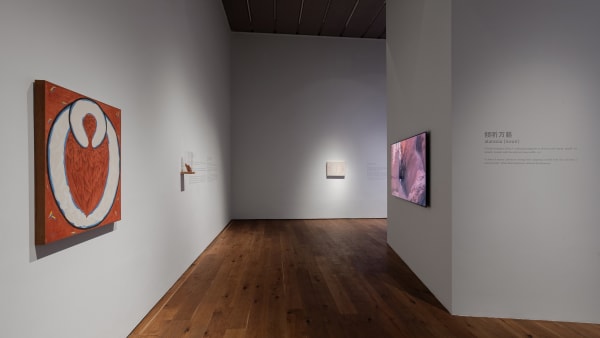
Observing My Distant Self: Kang Chunhui
September 20, 2024Read more
